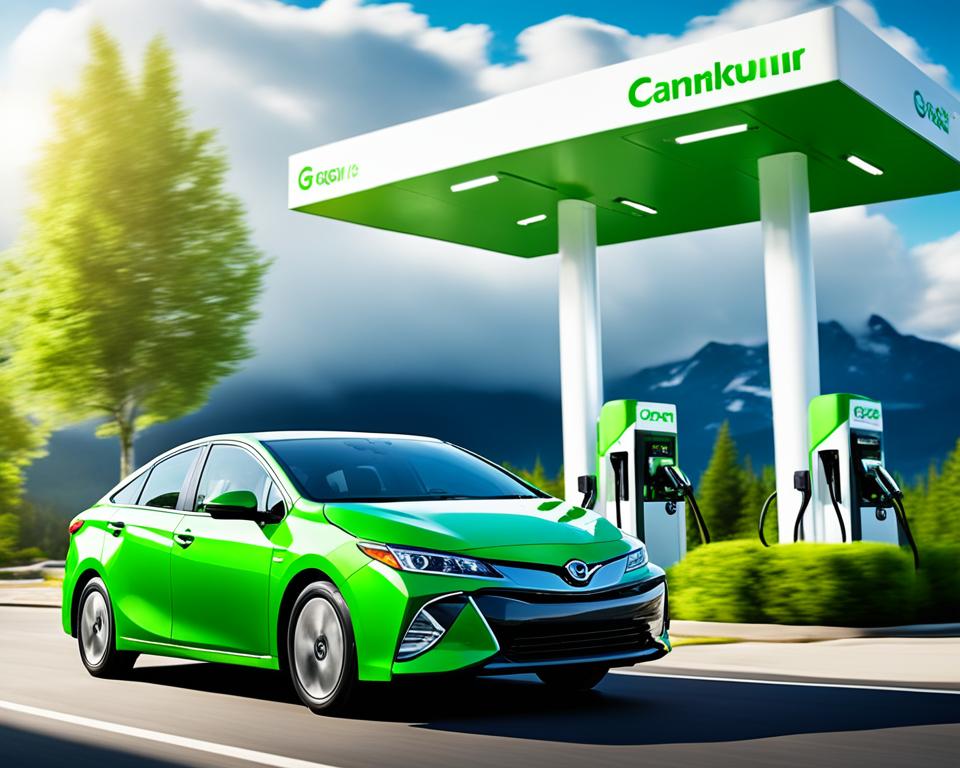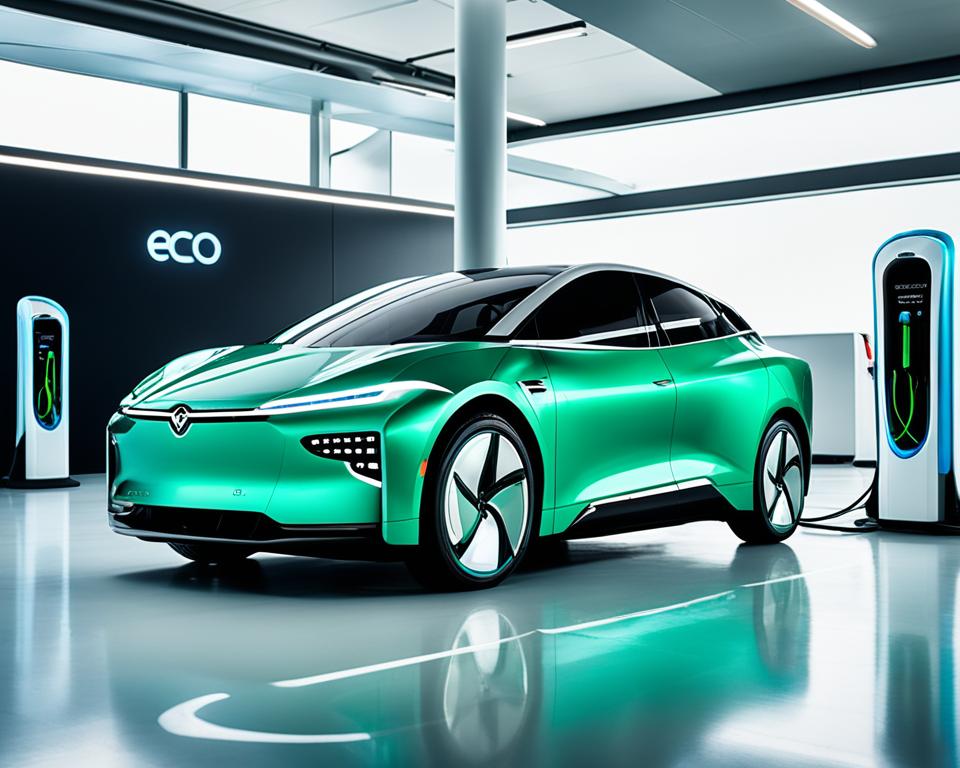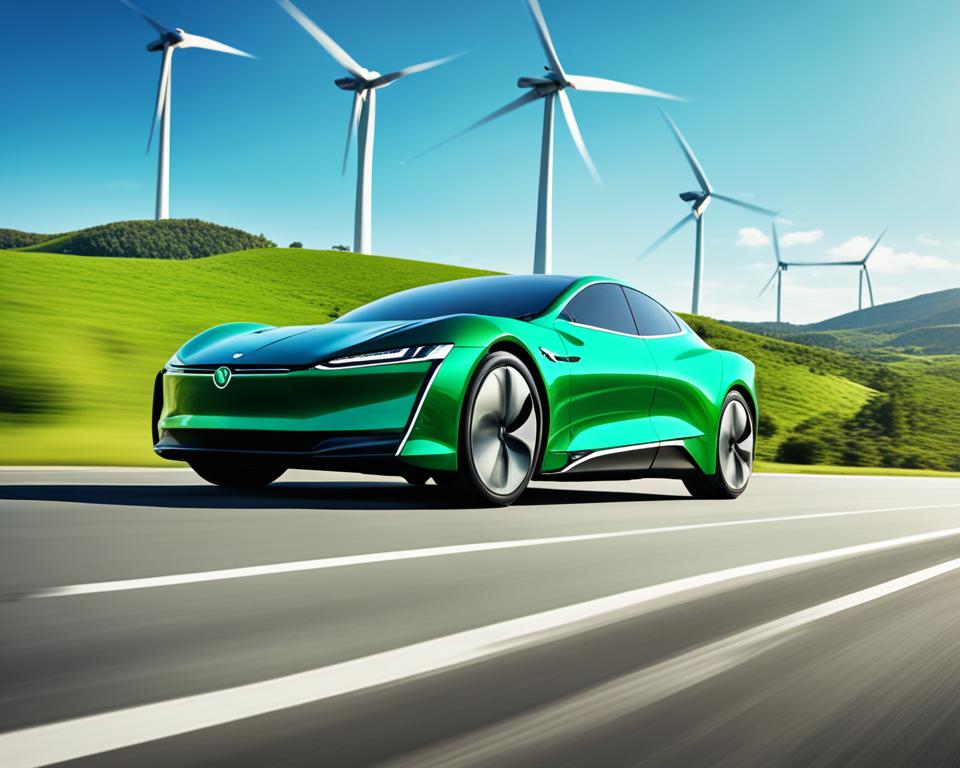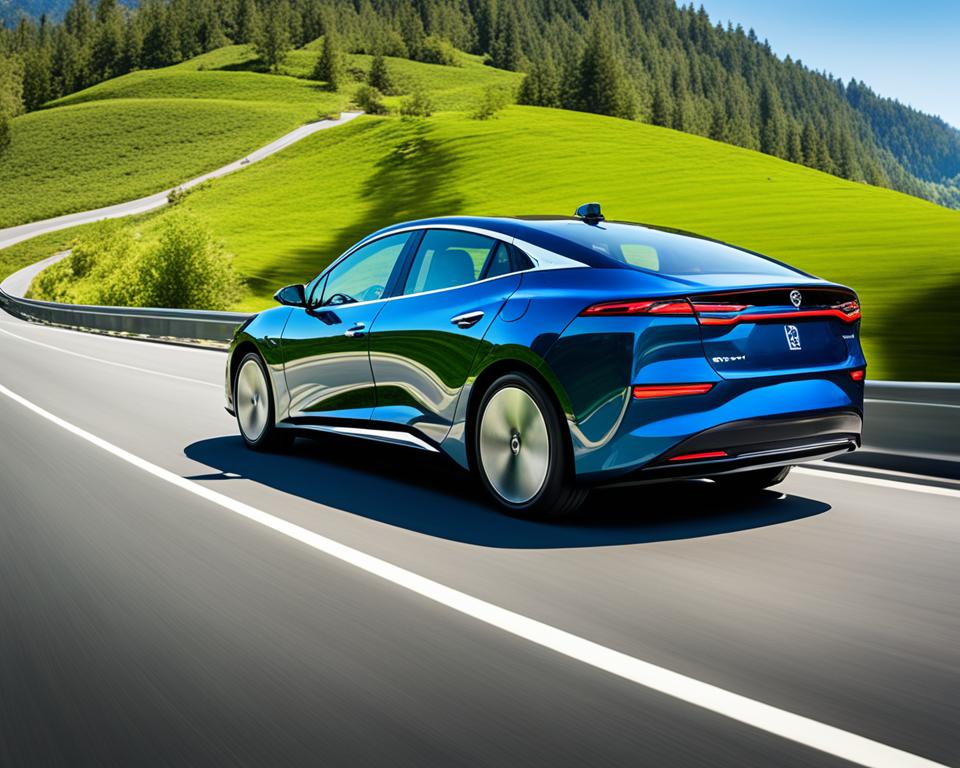- 1. Introduction to Hybrid and Plug-In Hybrid Vehicles
- 2. Fuel Efficiency and Emission Reduction
- 3. Hybrid Cars and Plug-In Hybrids: A Sustainable Solution
- 4. Hybrid Cars and Plug-In Hybrids: Types and Models
- 5. Hybrid Cars and Plug-In Hybrids: Charging and Infrastructure
- 6. Hybrid Cars and Plug-In Hybrids: Cost and Incentives
- 7. Hybrid Cars and Plug-In Hybrids: Battery Technology
- 8. Hybrid Cars and Plug-In Hybrids: Environmental Impact
- 9. Conclusion
- 10. FAQ
- 10.1 What are the main challenges facing electric vehicles in the next decade?
- 10.2 What is the current global market share of electric vehicles?
- 10.3 What are the benefits of hybrid cars and plug-in hybrids?
- 10.4 How do plug-in hybrids compare to battery electric vehicles in terms of emissions reduction?
- 10.5 What are some examples of popular hybrid and plug-in hybrid models?
- 10.6 How do hybrid and plug-in hybrid vehicles charge?
- 10.7 What are the cost and incentive considerations for hybrid and plug-in hybrid vehicles?
- 10.8 What are the key considerations regarding battery technology for hybrid and plug-in hybrid vehicles?
- 10.9 What is the environmental impact of hybrid and plug-in hybrid vehicles?
- 11. Source Links
As we navigate the ever-evolving landscape of transportation, the rise of hybrid cars and plug-in hybrid electric vehicles (PHEVs) has gained significant attention. These innovative technologies offer a promising path towards a more sustainable future, addressing the growing concerns around fuel efficiency, environmental impact, and the need for cleaner transportation solutions. In this article, we will explore the compelling reasons why hybrid cars and plug-in hybrids are the ideal choice for those seeking to embrace a more sustainable lifestyle.
The world is transitioning towards a greener future, and the transportation sector plays a crucial role in this transformation. While electric vehicles (EVs) have garnered significant buzz, they face several challenges in the coming decade. According to the first source, some of the critical minerals needed for EV batteries could be supply-constrained by 2030, and the mineral/battery supply chains are largely powered by fossil fuels, producing significant emissions even before the EVs hit the roads. Additionally, the grid electricity used to power EVs is not yet entirely carbon-free.
Amidst these challenges, hybrid cars and plug-in hybrids have emerged as a promising solution. The second source reveals that between 100%-EVs and PHEVs, the total amount of electric vehicles sold globally is 18% of new vehicle sales as of August 2023. This statistic underscores the continued popularity of hybrid vehicles, as many drivers find them a practical and appealing option. As the third source explains, hybrid vehicles remain popular because they can save on gas and reduce carbon footprints without the range anxiety or charging needs associated with fully electric vehicles.
However, some environmental advocates argue that it’s time for hybrids to fade into history, as they are at best a detour and at worst an obstruction in the fight against climate change. While this perspective has merit, the reality is that hybrid cars and plug-in hybrids can play a crucial role in bridging the gap to full electrification, especially in the short to medium term when critical mineral supplies and charging infrastructure may be limited.
Key Takeaways
- Hybrid cars and plug-in hybrids offer a sustainable solution for reducing greenhouse gas emissions and dependence on fossil fuels.
- They provide improved fuel efficiency, lower emissions, and long-term cost savings for consumers.
- Hybrid vehicles can serve as an important transitional technology, bridging the gap to full electrification.
- While EVs face challenges related to critical mineral supplies and grid electricity sources, hybrids can contribute significantly to the sustainable transportation system.
- With government incentives and continued technological advancements, hybrid and plug-in hybrid vehicles can play a crucial role in the transition to a greener future.
Introduction to Hybrid and Plug-In Hybrid Vehicles
As the world continues to grapple with the environmental challenges posed by traditional internal combustion engine vehicles, hybrid cars and plug-in hybrid electric vehicles (PHEVs) have emerged as increasingly popular and sustainable transportation solutions. These innovative technologies offer a unique blend of fuel efficiency, reduced greenhouse gas emissions, and decreased dependence on fossil fuels, making them an attractive option for eco-conscious consumers.
What are Hybrid Cars?
Hybrid cars, such as the iconic Toyota Prius, combine a traditional gasoline-powered engine with an electric motor and battery. This hybrid system allows the vehicle to switch between the two power sources, optimizing efficiency and minimizing fuel consumption. Standard hybrid vehicles have modified internal combustion engines designed to utilize biofuels (ethanol or biodiesel) or a biofuel-gasoline blend, further enhancing their environmental credentials.
What are Plug-In Hybrid Cars?
Plug-in hybrid electric vehicles (PHEVs) take the hybrid concept one step further. These vehicles are equipped with both an internal combustion engine and an electric motor, but they also have the ability to be recharged by plugging into the electrical grid. This allows PHEVs to run solely on electric power for a significant portion of their driving range, further reducing their reliance on fossil fuels and emissions.
Benefits of Hybrid and Plug-In Hybrid Cars
The primary benefits of hybrid cars and plug-in hybrids include increased fuel efficiency, lower greenhouse gas emissions, and reduced dependence on fossil fuels compared to traditional internal combustion engine vehicles. These advantages not only contribute to a cleaner environment but also translate into long-term cost savings for consumers through reduced fuel expenses and maintenance costs.
As we continue to prioritize sustainable transportation solutions, hybrid and plug-in hybrid vehicles stand as essential intermediary technologies, bridging the gap between conventional gasoline-powered cars and the fully electric vehicles of the future. By offering a balance of performance, environmental responsibility, and practical considerations, these innovative automobiles are poised to play a pivotal role in our collective journey towards a greener, more sustainable transportation ecosystem.
Fuel Efficiency and Emission Reduction
As the demand for environmentally conscious transportation solutions continues to grow, hybrid cars and plug-in hybrids have emerged as a compelling option for drivers seeking to improve their fuel efficiency and reduce their carbon footprint. These advanced vehicles combine the benefits of traditional internal combustion engines with the efficiency and clean-energy advantages of electric motors, offering a unique blend of performance and sustainability.
Improved Fuel Economy
Hybrid vehicles, such as the iconic Toyota Prius, have consistently demonstrated their ability to deliver superior fuel efficiency compared to their conventional gasoline-powered counterparts. By seamlessly integrating the electric motor and gasoline engine, hybrid cars can optimize power delivery and minimize fuel consumption, providing drivers with a more economical driving experience. This increased fuel efficiency not only translates to significant cost savings at the pump but also plays a crucial role in reducing dependence on fossil fuels.
Lower Greenhouse Gas Emissions
One of the primary advantages of hybrid cars and plug-in hybrids is their ability to significantly reduce greenhouse gas emissions. According to a recent study, a plug-in hybrid electric vehicle (PHEV) can reduce lifetime emissions by up to 46% on average in the United States, outperforming even battery electric vehicles (BEVs) in this regard. This is due to the combination of electric and gasoline-powered propulsion, which allows for a more efficient combustion process and a lower overall carbon footprint.
Reduced Dependence on Fossil Fuels
In addition to improved fuel efficiency and reduced emissions, hybrid and plug-in hybrid vehicles are also instrumental in reducing our collective dependence on fossil fuels. By incorporating electric motors and the ability to run on battery power, these vehicles can minimize the use of gasoline and diesel, contributing to a more sustainable transportation ecosystem. As the world transitions towards cleaner energy sources, the role of hybrid and plug-in hybrid technologies becomes increasingly crucial in bridging the gap towards a fully electrified future.

Hybrid Cars and Plug-In Hybrids: A Sustainable Solution
As the world transitions towards a more sustainable future, hybrid cars and plug-in hybrid electric vehicles (PHEVs) have emerged as an important bridge between traditional internal combustion engine vehicles and fully electric vehicles. These advanced powertrain technologies offer a practical and accessible solution to reduce greenhouse gas emissions and dependence on fossil fuels, while also providing an intermediate step towards widespread electrification.
Bridging the Gap to Full Electrification
Hybrid cars and PHEVs play a crucial role in bridging the gap to full electrification. While battery electric vehicles (BEVs) represent the ultimate goal, they face certain challenges in the near-term, such as supply constraints for critical minerals needed for their batteries and the need for a more robust charging infrastructure. Hybrid and plug-in hybrid models can deliver better climate benefits today, utilizing the current transportation infrastructure more efficiently and reducing emissions from internal combustion engines.
Reducing Carbon Footprint
Hybrid vehicles, PHEVs, and fully electric vehicles all contribute to significantly reducing greenhouse gas emissions from the transportation sector, one of the largest sources of carbon pollution. By combining an internal combustion engine with an electric motor, hybrid and plug-in hybrid cars can achieve impressive fuel efficiency and lower tailpipe emissions compared to traditional gasoline-powered vehicles. This helps to shrink the overall carbon footprint of the transportation system and plays a vital role in the fight against climate change.
Supporting Renewable Energy Transition
The rise of hybrid and plug-in hybrid vehicles also supports the broader transition to renewable energy sources. As the grid becomes increasingly powered by clean, renewable electricity, the environmental benefits of these advanced vehicle technologies will be amplified. Hybrid and PHEV owners can further reduce their carbon footprint by charging their vehicles with renewable energy, whether from rooftop solar panels or the local utility grid.
Overall, hybrid cars and plug-in hybrids offer a sustainable solution that can help bridge the gap to a fully electrified transportation future. By improving fuel efficiency, lowering emissions, and supporting the renewable energy transition, these advanced vehicle technologies are playing a vital role in creating a more sustainable and environmentally-friendly mobility landscape.
Hybrid Cars and Plug-In Hybrids: Types and Models
Over the past quarter century, the hybrid car landscape has evolved significantly, with a growing number of models and options available to consumers. The Toyota Prius, which debuted in 1997, was the pioneering gasoline-electric hybrid vehicle that paved the way for the widespread adoption of hybrid technology. Today, hybrid cars and plug-in hybrid electric vehicles (PHEVs) can be found across various vehicle segments, from compact cars to SUVs and pickup trucks.
Toyota Prius: The Pioneer of Hybrid Cars
The Toyota Prius remains one of the most recognizable and popular hybrid models on the market. As the first mass-produced hybrid vehicle, the Prius has set the standard for fuel efficiency and environmental sustainability, inspiring other automakers to follow suit. The Prius’ combination of a gasoline engine and an electric motor has helped drivers save on fuel costs and reduce their carbon footprint for over two decades.
Plug-In Hybrid Models: Chevrolet Volt, Ford Fusion Energi
In addition to traditional hybrid vehicles, the market has also seen the emergence of plug-in hybrid electric vehicles (PHEVs). These models, such as the Chevrolet Volt and Ford Fusion Energi, offer the benefits of both gasoline-powered and all-electric driving. PHEVs can run on electric power for a limited range before seamlessly transitioning to the gasoline engine, providing consumers with increased flexibility and the ability to reduce their reliance on fossil fuels.
Luxury Hybrid and Plug-In Hybrid Options
As the demand for eco-friendly transportation has grown, automakers have also introduced hybrid and plug-in hybrid options in the luxury vehicle segment. Models like the Lexus RX Hybrid, BMW X5 xDrive45e, and Porsche Cayenne E-Hybrid cater to drivers who seek the performance and amenities of a premium vehicle while also prioritizing fuel efficiency and reduced emissions.

Hybrid Cars and Plug-In Hybrids: Charging and Infrastructure
As the adoption of hybrid cars and plug-in hybrid electric vehicles (PHEVs) continues to grow, the availability and accessibility of charging infrastructure have become increasingly important considerations for eco-conscious consumers. While battery electric vehicles (BEVs) require dedicated charging stations, hybrid and plug-in hybrid models offer a more versatile charging experience.
Home Charging Solutions
One of the primary benefits of PHEVs is the ability to charge them at home, using a standard household electrical outlet or a dedicated Level 2 charging station. This convenience allows drivers to maintain a significant electric-only range for daily commutes and errands, reducing their reliance on the internal combustion engine and minimizing fuel consumption. Many automakers, such as Toyota and Chevrolet, offer home charging solutions as part of their PHEV ownership experience, making the transition to eco-friendly transportation more seamless for consumers.
Public Charging Stations
While hybrid vehicles do not have the same charging infrastructure requirements as their all-electric counterparts, the availability of public charging stations can still be a consideration for some PHEV owners. As the network of public charging stations continues to expand across the United States, PHEV drivers have more opportunities to recharge their vehicles while away from home, further maximizing the electric-only driving range and minimizing the use of gasoline.
Regenerative Braking Technology
One of the key technologies that enhances the efficiency of hybrid and plug-in hybrid vehicles is regenerative braking. This innovative system captures the energy generated during braking and coasting, converting it into electricity that is stored in the vehicle’s battery. This recovered energy can then be used to power the electric motor, reducing the load on the internal combustion engine and improving overall fuel efficiency. The incorporation of regenerative braking is a significant contributing factor to the superior environmental performance of hybrid and PHEV models.
Hybrid Cars and Plug-In Hybrids: Cost and Incentives
While the initial cost of hybrid cars and plug-in hybrid electric vehicles (PHEVs) may be higher than traditional gasoline-powered vehicles, they can provide significant long-term savings for consumers. In addition to improved fuel efficiency and reduced greenhouse gas emissions, hybrid and plug-in hybrid models often come with a variety of incentives and tax credits that can help offset the upfront investment.
Initial Cost and Long-Term Savings
The second source states that EVs and hybrids offer long-term savings such as lower maintenance costs, in addition to increased fuel efficiency and decreased cost to run the vehicle. Though hybrids may be more expensive upfront, the third source explains that they can provide significant long-term savings on fuel and maintenance costs compared to traditional gas-powered vehicles.
Government Incentives and Tax Credits
The purchase of hybrid vehicles, PHEVs, and electric vehicles (EVs) often includes manufacturer and retailer incentives and rebates, in addition to state and federal tax incentives. These government programs are designed to encourage the adoption of more fuel-efficient and environmentally-friendly transportation options, such as the Toyota Prius, Chevrolet Volt, and Ford Fusion Hybrid.
Lower Maintenance and Operating Costs
Hybrid and plug-in hybrid vehicles not only offer improved fuel efficiency and reduced emissions, but they also typically have lower maintenance costs compared to their gasoline-powered counterparts. This is due to the regenerative braking technology, which captures energy from braking and coasting, reducing wear on brake components. Additionally, the simplified powertrain of hybrid and PHEV models can lead to reduced maintenance requirements over the life of the vehicle.

Hybrid Cars and Plug-In Hybrids: Battery Technology
As the automotive industry continues to evolve, the advancement of battery technology plays a crucial role in the widespread adoption of hybrid cars and plug-in hybrids. These vehicles rely on lithium-ion batteries as the primary energy storage solution, and ongoing research and development in this area are essential for improving performance, range, and overall sustainability.
Lithium-Ion Battery Advancements
Lithium-ion batteries have become the backbone of the hybrid and electric vehicle revolution, offering superior energy density, longer operating life, and improved safety compared to previous battery technologies. Automakers and battery manufacturers are constantly exploring ways to enhance lithium-ion battery technology, such as improving energy density, reducing charging times, and extending battery life.
One of the key focus areas is the development of advanced lithium-ion battery chemistries that can store more energy in a smaller package, allowing for greater vehicle range without compromising size or weight. These advancements, coupled with improved battery management systems, are helping to drive the performance and efficiency of hybrid and plug-in hybrid vehicles to new heights.
Battery Recycling and Sustainability
As the adoption of hybrid and plug-in hybrid vehicles continues to grow, the issue of battery recycling and sustainability becomes increasingly important. At the end of a vehicle’s lifespan, the lithium-ion batteries used in these cars must be properly recycled to recover valuable materials and minimize environmental impact.
Automakers and battery manufacturers are working to establish robust recycling programs and processes to ensure that these critical resources are recovered and reused, rather than ending up in landfills. By prioritizing battery recycling and promoting the circular economy, the hybrid and plug-in hybrid industry can further enhance its sustainability credentials and reduce its overall environmental footprint.
Hybrid Cars and Plug-In Hybrids: Environmental Impact
As the global community strives to address the pressing issue of climate change, the role of hybrid cars and plug-in hybrids in sustainable transportation solutions has become increasingly pivotal. These innovative vehicle technologies offer a promising pathway to reduce our environmental impact and move towards a greener future.
Reduced Air Pollution
One of the standout benefits of hybrid cars and plug-in hybrids is their ability to significantly reduce air pollution. Unlike conventional internal combustion engine vehicles, EVs and hybrids produce zero tailpipe emissions, eliminating the release of harmful pollutants such as nitrogen oxides, particulate matter, and carbon monoxide into the atmosphere. This not only improves air quality in urban areas but also contributes to overall environmental health and well-being.
Noise Pollution Reduction
In addition to their environmental impact on air quality, hybrid cars and plug-in hybrids also offer a notable advantage in terms of noise pollution reduction. The electric motors used in these vehicles operate much more quietly than traditional gasoline-powered engines, creating a more peaceful and serene driving experience, especially in city environments. This reduction in noise pollution can have a positive impact on the overall quality of life for residents and communities.
Sustainable Transportation Solutions
As we collectively strive to address the global climate crisis, hybrid cars and plug-in hybrids are widely recognized as essential components of the sustainable transportation solution. By reducing greenhouse gas emissions and dependence on fossil fuels, these innovative vehicle technologies play a crucial role in the transition towards a more environmentally responsible and eco-friendly transportation system. While some environmental advocates argue that hybrids are only a temporary measure, the reality is that they can make a significant impact in the near-term, bridging the gap until fully electric vehicles become more widely accessible and affordable.

Conclusion
In conclusion, hybrid cars and plug-in hybrids offer a sustainable solution for reducing greenhouse gas emissions and dependence on fossil fuels in the transportation sector. While fully electric vehicles are seen as the ultimate goal, hybrid cars and plug-in hybrids can play an important role in bridging the gap to full electrification, especially in the short to medium term when critical mineral supplies and charging infrastructure may be limited.
Hybrid and plug-in hybrid vehicles provide improved fuel efficiency, lower emissions, and long-term cost savings for consumers. As the technology continues to evolve, and with the support of government incentives and policies, hybrid and plug-in hybrid vehicles can contribute significantly to the transition to a more sustainable transportation system.
The Toyota Prius, Chevrolet Volt, and Ford Fusion Hybrid are just a few examples of the hybrid and plug-in hybrid models available today, offering a diverse range of options for eco-conscious drivers. With their ability to reduce air pollution, noise pollution, and greenhouse gas emissions, these vehicles are an essential part of the solution to the climate crisis we face.
FAQ
What are the main challenges facing electric vehicles in the next decade?
According to the first source, there are three main challenges facing electric vehicles in the next decade: 1) Some of the critical minerals needed for EV batteries could be supply-constrained by 2030, 2) Mineral/battery supply chains are largely powered by fossil fuels today and produce significant emissions well before the EVs hit the roads, and 3) Grid electricity used to power the EVs is not carbon-free.
What is the current global market share of electric vehicles?
According to the second source, the total amount of electric vehicles, including both 100%-EVs and PHEVs, sold globally is 18% of new vehicle sales as of August 2023.
What are the benefits of hybrid cars and plug-in hybrids?
The benefits of hybrid cars and plug-in hybrids include increased fuel efficiency, lower greenhouse gas emissions, and reduced dependence on fossil fuels compared to traditional internal combustion engine vehicles.
How do plug-in hybrids compare to battery electric vehicles in terms of emissions reduction?
According to the first source, a plug-in hybrid electric vehicle (PHEV) reduces lifetime emissions by 46% on average in the US, slightly better performance than a battery electric vehicle (BEV) with a much lower dependence on critical minerals.
What are some examples of popular hybrid and plug-in hybrid models?
The second source mentions the Chevrolet Volt and Ford Fusion Energi as examples of popular plug-in hybrid models, while the third source notes that the Toyota Prius was the first mass-produced gasoline/electric hybrid vehicle and that hybrids are now available in virtually every vehicle segment, including SUVs, minivans, and pickup trucks from automakers like Toyota, Kia, Hyundai, and Honda.
How do hybrid and plug-in hybrid vehicles charge?
The second source explains that plug-in hybrid electric vehicles (PHEVs) charge by plugging into the grid (unless charged with renewable energy at home), storing enough electricity to significantly reduce gas use. The third source mentions that many people are concerned about the ability to charge electric vehicles at home, which is keeping some from purchasing EVs. However, hybrids do not have the same charging infrastructure requirements.
What are the cost and incentive considerations for hybrid and plug-in hybrid vehicles?
The second source states that the purchase of hybrid vehicles, PHEVs, and EVs often includes manufacturer and retailer incentives and rebates, in addition to state and federal tax incentives. It also mentions that EVs and hybrids offer long-term savings such as lower maintenance costs, in addition to increased fuel efficiency and decreased cost to run the vehicle. The third source explains that while hybrids may be more expensive upfront, they can provide significant long-term savings on fuel and maintenance costs compared to traditional gas-powered vehicles.
What are the key considerations regarding battery technology for hybrid and plug-in hybrid vehicles?
The first source discusses the importance of treating critical minerals like lithium, graphite, cobalt, and neodymium as finite resources in the short term, as supply constraints could limit battery production. However, it notes that known mineral deposits exceed the total projected demand for both energy transition and other uses through 2050, and technology will likely evolve well before then. The second source explains that lithium-ion batteries are the primary energy storage technology used in EVs and hybrids, and advancements in this technology are crucial for improving vehicle range and performance. Recycling these batteries at the end of their useful life is also important for sustainability.
What is the environmental impact of hybrid and plug-in hybrid vehicles?
The second source explains that EVs and hybrids are much better for the environment than conventional internal combustion engine vehicles, generating much less pollution. It states that EVs produce zero tailpipe emissions, and hybrids significantly reduce greenhouse gas emissions and dependence on fossil fuels. The third source notes that hybrids, along with EVs, are seen as an essential part of the solution to the climate crisis, as they can help reduce air pollution and noise pollution from transportation.
Source Links
- https://illuminem.com/illuminemvoices/why-plugin-hybrids-are-better-for-climate-than-full-evs-today
- https://www.greencitytimes.com/hybrids-plug-in-hybrids-and-electric-vehicles/
- https://www.npr.org/2023/02/24/1158306767/prius-toyota-hybrids-electric-car-climate-change
